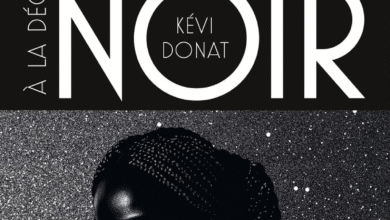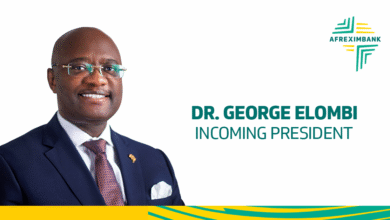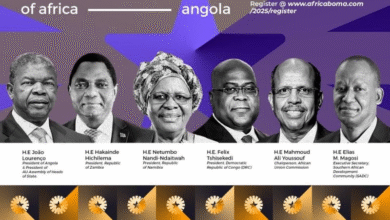
Interview by Mérième Alaoui
Last May, you were appointed by the Council of Ministers to head the Arts and Culture Development Agency. Could you be considered an expert on the « cultural market »?
I used to be an economist, a banker and a specialist in cultural business management. At a certain point, I made myself available to governments and institutions with the aim of developing the economy of artistic creation. This led me to work for the International Organization of La Francophonie (OIF) and the European Union (EU). I was tasked by these institutions with fostering cultural economic growth across Africa, the Caribbean, and Vietnam. » I accepted this new assignment in Benin because I was convinced of the government’s determination to make culture and the arts a key area for development. I could see the energy that was being put into this and the resources that were available to make a real difference in this area.
How does the cultural economy represent a specific opportunity for Benin and, more generally, for Africa?

The power of a nation lies in its economy, its military strength and its cultural dimension. In Africa, it’s in the cultural dimension that we have the greatest potential. An area in which we could develop comparative advantages over other countries, given our unique history. My roadmap is to highlight our values, our specific message, our vision of the world and how we can contribute, in our own way, to making the world a better place.
Developing Benin’s art market
Benin is embarking on an ambitious cultural project with an announced total cost of two billion euros over ten years… Will the state be the main provider of this funding?
This is no coincidence and, contrary to popular belief, it is not a « Benin miracle ». This project is the result of a structured and well-thought-out initiative by President Patrice Talon since the beginning of his first term in 2016. He has chosen to make culture, the arts and tourism a central pillar of Benin’s development, which means that we can now allocate two billion euros of investment to this sector. This far exceeds anything that has been done in this area since our independence. It is also exceptional on a continental scale. The flagship of this policy in the eyes of the public was the return of the royal treasures (twenty-six works from the Abomey treasure, seized by colonial troops, were returned by France in November 2021, ed.), which mobilized a great deal of diplomatic and logistical energy. The exhibition of these works was a phenomenal success. It was an opportunity to show the works of the genius of our ancestors, as well as the best of what the contemporary art scene is producing. We can see that there is continuity in Benin in the field of artistic creation, and the least we can say is that creative talent has not left this country. After Benin, the exhibition went on to Morocco and is currently touring Martinique before moving on to other horizons.
Has the creation of the first national gallery added value to Beninese creations on the international art market?
With all the excitement, we needed to create a framework that would allow artists and cultural professionals to make a living from their talent. An ecosystem that would create opportunities to generate wealth and jobs, while ensuring that this could trickle down to the whole of Beninese society. With these considerations in mind, the state created a national gallery to stimulate the art market, showcase contemporary creations, and host and promote artists. Once the way had been shown, the private sector took over with the creation of several other galleries to showcase works. In record time, the initial value of Beninese creations has increased tenfold. And this trend is set to continue, with Benin taking part in the Venice Biennale for the first time. The National Gallery has thus become the Arts and Culture Development Agency, which I head.
Does this economic momentum encourage the teaching of Benin’s history and the promotion of collective memory?

Every country is the product of its history and geography. I could also say that nature, or providence, has not been stingy with us. We have a very rich history in terms of cultural life and intangible heritage. Voodoo is part of that heritage and part of our ancient traditions. We will celebrate this religious tradition on January 10. Benin was also involved in the slave trade, which today affects a diaspora in America and the Caribbean whose ancestors left Africa. Our territory has inherited the traces of this tragic triangular trade. Our ambition is to showcase them as part of a commemorative tourism program.
« There is something that sets us apart, something that distinguishes us, something that is our identity and that we want to transmit”
What do you want young people to remember about this tragic episode in Benin’s history?
It’s important to remember that we were not passive, that we stood up. Benin’s bravery was epitomized by historical figures such as King Behanzin, who is buried in Blida in Algeria. He used his body to block the invaders. This deserves to be known and shared. We have a message to pass on and values to share. There is something that sets us apart, something that distinguishes us, something that is our identity and that we want to transmit.
Today there is a statue in Cotonou, which has received a lot of media attention, symbolizing the place of women in the period you are talking about…
Yes, women and feminism are very present in our history. The figure of the Amazon is a symbol of this singularity. In the past, Benin had an all-female army. It was they who drove out the French army during the colonial conquest of 1890. And it was only in 1892, when the better-prepared French troops returned, that they managed to defeat the bravery of these women. Today, in Cotonou, there is a huge statue that bears witness to this feminist imprint on our history. It’s also our way of highlighting these women who resisted the invaders.
How can we ensure that this active cultural policy continues?
Benin has set up a program of cultural education to introduce the arts to students from secondary school onwards. The aim is to allow them to express their creativity alongside traditional teaching methods. All of this is intended to promote the sustainability of creation. We’re also planning to create a cultural and creative district in Cotonou to inspire vocations and stimulate talent. This is a fourteen-hectare industrial wasteland that will be redeveloped exclusively as an infrastructure for artistic expression. The project includes the Cotonou Museum of Contemporary Art (MAC), currently under construction, the Franco-Beninese institution, a craft village, an artists’ studio with residences, a coworking space… In all, fourteen facilities concentrated on a dynamic platform, by December 2025. All these projects are designed to be sustainable.
Find out more : National Gallery of Benin







